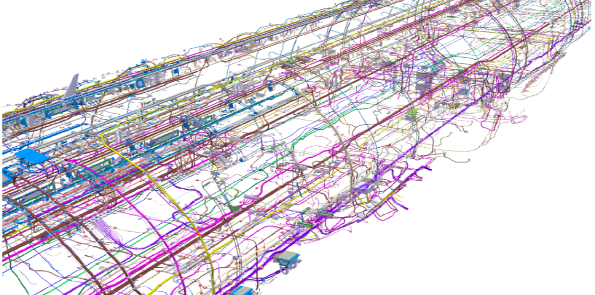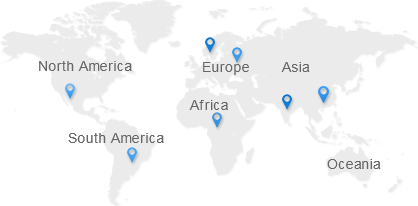Kingsignal Consumer Products
The tried and true coaxial cable can transmit all kinds of signals - HDTV, digital video, composite video, component video, S-video, FM, and more. We have several options of coax to choose from for wherever you need to use them: schools, hospitals, security systems, or even just connecting your home cable TV. Indoor, outdoor, plenum-rated, dual or quad shielded, we've got the right cable for any application. We've even got flat coaxial cables from Taperwire for something unique and different. Once you've found the right cable, don't forget to check out our selection of coaxial connectors. Coaxial cable is sometimes used by telephone companies from their central office to the telephone poles near users. It is also widely installed for use in business and corporation Ethernet and other types of local area network. Depending upon the carrier's technology and other factors, twisted pair copper wire and optical fiber may be used instead of coaxial cable. A coaxial cable, sometimes called a coax cable, provides an interference-free transmission path for high-frequency electrical signals.
Coax cables were once prevalent in computers, but were replaced by digital links, such as Ethernet and other types of local area network cabling. Coaxial cables are used by telcos to carry signals from a central office to telephone poles and by cable TV providers for service in communities. Twisted pair copper wire and optical fiber may be used instead of coaxial cable.
The virtualized network poses challenges to network management systems -- and as more hardware components become virtualized, that challenge becomes even greater. This handbook discusses the steps IT must take to both build and corral their virtualized infrastructure.
Coax cables have concentric layers of electrical conductors and insulating material. This construction ensures that signals are enclosed within the cable and prevents electrical noise from interfering with the signal. It also yields the name "coaxial," referring to its two physical channels running along the same axis.
coaxial cableThe center layer is a thin conducting wire, either solid or braided copper. A dielectric layer, made up of an insulating material with very well-defined electrical characteristics, surrounds the wire. A shield layer then surrounds the dielectric layer with metal foil or braided copper mesh. The whole assembly is wrapped in an insulating jacket. The outer metal shield layer of the coax cable is typically grounded in the connectors at both ends to shield the signals, and as a place for stray interference signals to dissipate.
A key to coaxial cable design is tight control of cable dimensions and materials. Together, they ensure that the characteristic impedance of the cable takes on a fixed value. High-frequency signals are partially reflected at impedance mismatches, causing errors.
Characteristic impedance is sensitive to signal frequency. Above 1 GHz, the cable maker must use a dielectric that doesn't attenuate the signal too much, or change the characteristic impedance in a way that creates signal reflections. Vendor specs should provide guidance.
Electrical characteristics of coax are application dependent and crucial to good performance. Two standard characteristic impedances are 50 Ohm, used in moderate power environments, and 75 Ohm, common for connections to antennas and residential installations.
Simple coax cables carry only one connection. There are variations, such as twinax, that place multiple connectors at the center and take advantage of transmission line properties to pass the signal. Applications sometimes bundle multiple separate coax cables inside a protective plastic outer layer applied to prevent mechanical damage.
Connectors for coax range from simple single connectors used on cable TV systems to complicated combinations of multiple thin coax links, mixed with power and other signal connections, housed in semi-custom bodies. These are commonly found in military electronics and avionics.
Mechanical stiffness can vary tremendously, depending on the internal construction and intended use of the coaxial cabling. For example, high-power cables are often made with thick insulation and are very stiff.
Some cables are deliberately made with thick center wires, resulting in skin-effect resistance. It results from high-frequency signals traveling on the surface of the conductor, not throughout. If the center conductor is larger, it results in a stiff cable with low loss per meter.
If you need help selecting a solution for your cable management needs, feel free to call our friendly and knowledgeable staff at
Domestic Business: 0755-26016250
Overseas Business: 0086-755-86319150-636






